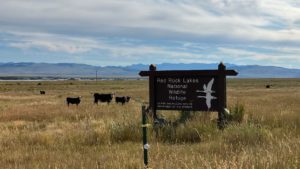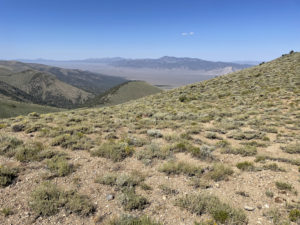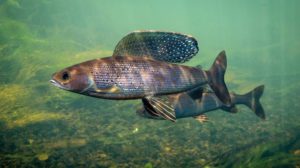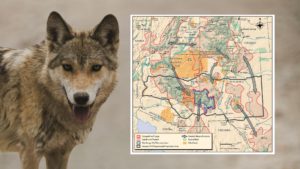FOR IMMEDIATE RELEASE
August 5, 2025
Contacts:
- Dagny Signorelli, Western Watersheds Project, dagny@westernwatersheds.org, (970) 312-1828
- Kristin Combs, Wyoming Wildlife Advocates, kristin@wyowild.org, (307) 413-4116
- Jonathan Ratner, Sage Steppe Wild, Jonathan@Wild-Sage.org, (307) 231-1325
- Clinton Nagel, Gallatin Wildlife Association, clint_nagel@yahoo.com, (406) 600-1792
- Rob Joyce, Sierra Club Wyoming Chapter, rob.joyce@sierraclub.org, (610) 350-8521
Despite CWD Outbreak, Forest Service Keeps Elk Feedgrounds Alive
Short-term reauthorization ignores clear signal to end artificial feeding at Dell Creek and Forest Park
PINEDALE, WY — Yesterday, the U.S. Forest Service issued a draft Record of Decision (ROD) reauthorizing Wyoming’s controversial Dell Creek and Forest Park elk feedgrounds through 2028, ensuring the continued artificial feeding of elk despite the first confirmed cases of chronic wasting disease (CWD) on feedgrounds last winter.
The agency had every opportunity, ample justification, and court orders to end this failed experiment. The No Special Use Authorization (NF) Alternative was fully analyzed, backed by science, and would have immediately ended feeding. Even the Phase-Out Alternative would have done less long-term damage. Instead, the Forest Service chose to allow continued feeding, effectively ignoring the clear warning sign delivered when CWD reached the feedgrounds for the first time.
“For decades, these feedgrounds have distorted natural wildlife behavior, spread disease, and kept elk tethered to outdated management priorities,” said Dagny Signorelli, Western Watersheds Project’s Wyoming Director. “The spread of CWD to the feedgrounds was the most obvious reason to shut them down for good.”
Wyoming is home to 21 elk feedgrounds, significantly more than any other state. Originally created to divert elk from private livestock operations on public lands and maintain high hunting quotas, the feedgrounds now serve primarily to support artificially inflated elk densities at the expense of wildlife health and ecological balance.
This comes at a steep cost: feedgrounds increase the risk of disease transmission, especially chronic wasting disease (CWD)—a fatal, incurable neurological prion disease that causes progressive brain degeneration, extreme weight loss, disorientation, and death. Infected animals can shed the disease for months before showing symptoms, spreading it silently through saliva, urine, and feces. There is no way to stop or reverse the disease once it takes hold, so only prevention through responsible wildlife management can limit its spread.
Chronic Wasting Disease isn’t just a threat to deer, elk, and moose populations, it’s also a long-term environmental contaminant. The misfolded proteins that cause CWD, called prions, can persist in soil and plant material for over a decade, creating a toxic legacy on the landscape. Once an area is contaminated, it’s nearly impossible to clean up, as these prions bind tightly to soil particles and can even be taken up by plants, potentially exposing animals that graze there years later. In many ways, CWD is like biological toxic waste being poured onto the land – silent, invisible, and nearly indestructible.The Forest Service cannot continue to ignore this fact and allow unnatural congregations of wildlife to occur on FS lands.
“It really is time to close the door on the practice of bad wildlife policy. Even though the termination process of artificial feeding may be on the horizon, it is still too far off in the distance. Much death and biological harm can befall the cervids of the GYE in the meantime” said Clint Nagel, President of the Gallatin Wildlife Association of Montana. It is time to bring this chapter of poor wildlife management and bad decision-making to a close”.
In 2024 alone, Wyoming tested over 5,200 cervids for CWD. Nearly 14% tested positive statewide, including 19.4% of mule deer bucks and 29.2% of white-tailed bucks. While elk have historically shown lower prevalence, that trend is shifting. Once absent from elk feedgrounds but long predicted to emerge, CWD was confirmed in three new elk hunt areas last year and is now present on at least four elk feedgrounds including Dell Creek. The outbreak underscores growing evidence that artificial feeding sites are fueling the disease’s spread.
“Chronic wasting disease is no longer hypothetical—it’s here, it’s spreading, and feedgrounds are pouring gas on the fire,” said Kristin Combs, Wyoming Wildlife Advocates Executive Director. “There’s no vaccine, no cure, and no excuse to keep ignoring the science.”
Yet even as CWD spreads, political forces are aligning to preserve the status quo—and it’s unclear whether the Forest Service will follow. The draft ROD comes just days after Brian Nesvik—previous director of Wyoming Game and Fish and enabler of the feedground system—was confirmed to lead the U.S. Fish and Wildlife Service under the Trump administration. With federal leadership now shaped by the same state agency head responsible for decades of continued artificial feeding, will the Forest Service continue to follow their lead—or finally chart an independent, science-based course to protect wildlife and public lands?
“The whole massive network of these elk feedlots is based on layers and layers of lies. The Forest Service has spinelessly swallowed these lies. The Forest Service’s lack of leadership and moral compass is resulting in diseased wildlife and a contaminated, toxic ecosystem” said Jonathan Ratner, Sage Steppe Wild’s Director, “The Forest Service knows that the rigged Game and Fish planning process was designed by Nesvik from its inception to maintain the status quo and leave the livestock and outfitter industries with veto power over the health of our wildlife”.
The Forest Service’s own modeling shows that under the No Special Use Authorization (NF) alternative, elk populations stay larger, CWD prevalence drops, and disease-related mortality is reduced over time. In contrast, continued feeding, even shorter-term, concentrates elk unnaturally, degrades vegetative communities, and disrupts migratory behavior. Ending these permits is the only action that begins to unwind decades of ecological damage caused by inflating elk numbers to accommodate livestock use of public winter range. Authorizing feeding, even temporarily, reflects the federal government’s continued deference to state politics at the expense of its legal responsibility to protect ecological integrity and public trust resources.
###
